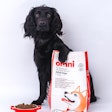
The pet food market’s ongoing growth has been a very bright silver lining to the COVID-19 cloud of the past two-plus years, and a significant driver for that has been soaring e-commerce. Signs have pointed to it continuing, but is there a limit to how high online shares can rise?
In the U.S., the share has reached as high as 21% for pet care overall and 27% for pet food, according to Packaged Facts. Its data shows pet product e-commerce sales increasing from US$6 billion in 2016 to US$26 billion in 2021. In spring 2022, a Packaged Facts survey of U.S. dog and cat owners indicated 40% shopping online more than pre-pandemic. NielsenIQ data revealed e-commerce in most categories — dry and wet dog and cat food, plus dog treats — growing by more than US$250,000 each throughout 2021.
Similarly, during an Interzoo 2022 country session, speakers presented Euromonitor data showing the online share of Brazil’s pet products market increased 37% from 2016 to 2021. It is still small relative to other markets; in Brazil, e-commerce accounts for 7% of the overall pet care industry. Still, the growth is noteworthy.
Will it continue apace? In the U.S., twice as many pet owners report planning to continue purchasing pet food, treats and other pet products online, according to Bryan Jaffe, managing director of Cascadia Capital, in the investment firm’s report, “Pet Industry Overview: Spring 2022.” Yet recent signs bear watching.
“However, across categories there is evidence of e-commerce fatigue,” Jaffe continued. “Numerator’s sales index has held steady across channels since year-end, but online has fallen 22.4% through March. People are moving again, spending less time online, and as confidence grows, they are running down their pantries. Additionally, persistent inflation will bifurcate the market with lower-income households trading down to private label and value brands, while higher-income demographics will continue to shop premium. All this amounts to clouds on the horizon for online pet food and product sales.”
This means tracking sales not only on e-commerce platforms like Chewy, Amazon, Petco.com and pet retailer sites, but also pet food and treat sales in all channels. The positive is that pet ownership is still rising worldwide, at least among some demographics, and all those mouths need to be fed no matter how and where their owners buy the food.
Global pet food growth



















